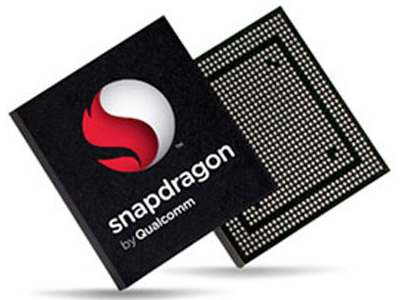Qualcomm's New Snapdragons are Backwards-Compatible
Dual-core is about to become the low-end smartphone standard thanks to Qualcomm's two new Snapdragon SoCs.
On Friday, Qualcomm introduced two new additions to its Snapdragon S4 class of mobile processors: the MSM8625 and the MSM8225 chipsets. These two SoCs will come packed with dual-core CPUs clocked up to 1 GHz, the Adreno 203 GPU and an integrated 3G modem.
However the best part about the new Snapdragons is that they are hardware and software compatible with the older MSM7x27A and MSM7x25A family of chipsets, making it easy for manufacturers of low-end smartphones to migrate from S1 to S4 designs, expanding their product lines in a cost effective way. Essentially, this means handset makers will be able to swap the faster SoCs into existing designs.
In addition to the new SoCs, Qualcomm has also launched the third-generation of its Qualcomm Reference Design ecosystem program (QRD) so that third party device manufacturers can develop differentiated high volume smartphones with lower development costs and a faster time to market. It comes with a "comprehensive set of software and hardware components" that are pre-tested and optimized for Qualcomm's chips to help accelerate the overall design process.
"This allows device manufacturers to focus their engineering resources on developing value-added features that will help make their high-volume smartphone stand out from the competition," the company said. "The QRD ecosystem program is designed to help device manufacturers developing products for regions whose networks are evolving from 2G to 3G and high volume smartphones are becoming increasingly popular."
On Friday Qualcomm said the MSM8625 and MSM8225 chipsets will be available on its third generation QRD development platform in the first half of 2012 in addition to being available as standalone chipsets. QRD development platforms based on both the MSM7x27A and MSM7x25A chipsets are currently available.
Get Tom's Hardware's best news and in-depth reviews, straight to your inbox.

Kevin Parrish has over a decade of experience as a writer, editor, and product tester. His work focused on computer hardware, networking equipment, smartphones, tablets, gaming consoles, and other internet-connected devices. His work has appeared in Tom's Hardware, Tom's Guide, Maximum PC, Digital Trends, Android Authority, How-To Geek, Lifewire, and others.
-
joytech22 Pretty amazing how dual-core CPU's will soon be in low-range devices..Reply
Here I was last year thinking my Galaxy S was high-end, I mean it's still pretty powerful but in comparison to today's devices and with the upcoming Tegra 3..
The phone space is REALLY moving along fast.
I like that a lot. :) -
illfindu So Old phones with new fancy names and II added to the end's of them and new chips thrown in? This would be nice if the prices would reflect this but we are gonna see old model phones with these new chips that where 100-200$ going for 400$. Would be interesting to see some kinda upgrade plan where you could buy a old model plan and pay a little extra to have it shipped with the upgraded chips.Reply -
thesnappyfingers wonder if there will be a day where the consumer will be able to simply upgrade their phone like they do a pc.Reply
Perhaps it is already here, I wouldn't know. Break to many phones to warrant purchasing nice ones. -
whitey_rolls For a mobile device noob, how does the Snapdragon compare to the Tegra chip? All things being even say dual core 1 ghz chip?Reply
-
beetlejuicegr I wonder if i can detach my nexus one snapdragon and reflow the new one buahahahReply -
razor512 whitey_rollsFor a mobile device noob, how does the Snapdragon compare to the Tegra chip? All things being even say dual core 1 ghz chip?for the current gen snapdragon chips vs a tegra 2, It takes a dual core snapdragon running at around 1.2-1.3GHz to match the CPU performance of a tegra 2 CPU (at least it seems that way from my benchmarking on my HP touchpad running android and the various benchmarking apps (though android is in beta and performance is not completely taken care of yet.Reply
For GPU performance the the snapdragon crushes the tegra 2 easily though not the tegra 3
PS the snapdragon CPU's are pretty good at overclocking. currently they top out at about 1.9GHz for their dual core chips easily making it the fastest dual core arm chip on the market. (in my testing, the overclocked HP touchpad (android limited me to 1.7GHz) was able to beat every other non overclocked mobile CPU in the benchmarking apps except the new tegra 3 tablets (which use quad core, but even then it was only like around 40% faster)
(not sure about the performance per clock of the MSM8625 though)
With tablets and ARM devices in general becoming more popular, I think it will be great if tomshardware can benchmark these mobile CPU's -
razor512 PS it would be great if these companies can come out with new chips eg quad core or dual core running at a significantly higher clock speed and maintain compatibility and pinout so users who are more skilled with surface mount soldering can take their old phones or tablets then simply grab a heat gun then desolder the old chip and solder in a new one and enjoy a good CPU upgrade.Reply
-
freggo Hmmm, replacing a surface mount CPU in a smart phone as a home project. Yeah, I can see how that can have mass appeal :-)Reply -
kyuuketsuki Are the S1 Snapdragons the ones in Windows Phones? Does this mean we might finally see some dual-core Windows Phones on the market?Reply
Also, I can't seem to find any benchmarks of the Adreno 203 GPU. I assume it's slower than the 205, but I'm wondering how it compares to other GPUs on the market. -
joytech22 ZingamTegra 3 isn't so great actually. It's overhyped. See the iPad 2 chip is more powerful. It appears that at least for an year we won't have anything extraordinary on the Android side.Reply
The iPad 2 chip is from Samsung. :o
Go samsung! lol
